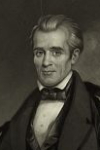 As long as people have gone to sea, boats have sunk. There have also been attempts to raise the boats – or at least their cargo. While today, submersibles, SCUBA outfits, and diving suits make this possible, the methods used in past centuries were not quite as… um, reliable. An early technology, described by Aristotle in the 4th Century BC, was the diving bell. It operates by lowering a bell-shaped vessel, open at the bottom, into the water, with the divers seated within in such a way that their heads remain above the water line Obviously, this can only be used to certain depths, as the water pressure would otherwise squeeze out the air. Early diving bells, like one invented by the astronomer Edmond Halley, remained submerged by shuttling air down in barrels. A better way of doing this was by connecting the bell to an airhose that was piped fresh air from the surface. A bell of this type was tested at the Washington Navy Yard in 1845.
As long as people have gone to sea, boats have sunk. There have also been attempts to raise the boats – or at least their cargo. While today, submersibles, SCUBA outfits, and diving suits make this possible, the methods used in past centuries were not quite as… um, reliable. An early technology, described by Aristotle in the 4th Century BC, was the diving bell. It operates by lowering a bell-shaped vessel, open at the bottom, into the water, with the divers seated within in such a way that their heads remain above the water line Obviously, this can only be used to certain depths, as the water pressure would otherwise squeeze out the air. Early diving bells, like one invented by the astronomer Edmond Halley, remained submerged by shuttling air down in barrels. A better way of doing this was by connecting the bell to an airhose that was piped fresh air from the surface. A bell of this type was tested at the Washington Navy Yard in 1845.
The man of the hour was George W. Taylor. Originally from South Carolina, he had been working on various ways of improving naval warfare for a number of years. Unfortunately, his methods had been too similar to those of Samuel Colt , and so he decided to explore other avenues of inquiry.
The result was his diving bell. An 1853 book, Select Experiments in Natural Philosophy, by Joseph M. Wightman, describes it thusly:
This Diving Bell, of which a section is represented by Fig. 6, was made of sheet copper the thickness of a cent. The form of the bottom was elliptical, one diameter being six feet, the other four feet; its interior height was six feet, and gradually diminished in size, so that at the top, the diameters were four and three feet. The top was nearly flat, but was surmounted with a small auxiliary bell, into which air could be admitted or expelled by turning the crank B, and thus render the Bell more or less buoyant, at pleasure. Two plates of glass five inches in diameter were fitted in the opposite sides at C C, near one of these was fixed an argand lamp D, to be used when a turbid state of the water rendered light necessary. The bottom of the Bell was open, except that three pieces of plank were fastened across, for those inside to stand upon, and for suspending two lead wights E E, of 500 pounds each, which could be detached if necessary, by those within. … A constant supply of fresh air was kept up by a powerful condensing-pump, operated upon the wharf, which forced the air into the Bell through a flexible hose F.
Taylor first used the bell in December of 1844, at the Charleston Navy Yard. Its success was such that he would use it for salvage operations for the following year: raising a chest worth $500 in Lake Huron and repairing another sunken ship to the point where it could be refloated.
But the real question was what the federal government would do with it. In December, 1845, Taylor came to D.C. in his schooner Spitfire (which had been seized from slavers off the coast of Africa earlier that year) and landed at the Navy Yard.
On December 17th, President James Polk (pictured above) wrote in his diary:
Received company until 12 O’Clock to-day. At that hour left my office & in company with the Secretary of the Navy visited the Navy Yard at Washington; went on board the vessel called the “Spit-fire” and witnessed Mr. Taylor descend into the water with his diving Bell, and remain under water for half an hour.
Unfortunately, nothing further came of Taylor’s experiments. He had some success during the Mexican-American war helping Commodore Matthew Perry demolish underwater structures. Alas, Taylor died in Washington in 1850– quite possibly due to injuries sustained during his dives. He is buried in Congressional Cemetery.
